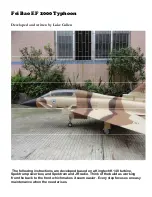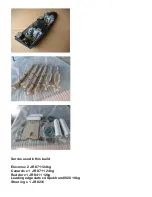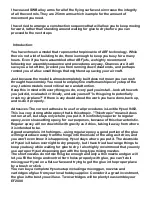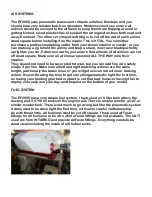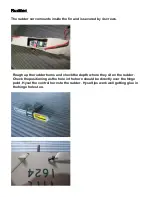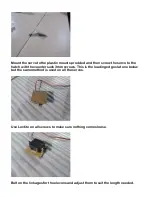
DISCLAIMER:
THIS IS NOT A TOY; it’s a high performance model capable of high speeds and
damage to persons and or property if not used responsibly. The manufacturer
and its distributors cannot control how you assemble this model, what type of
equipment you use, or how you fly it. FB can assume no liability whatsoever for
any damages that may occur when you fly your aircraft. By assembling this
model, you are agreeing to indemnify and hold blameless the manufacturer and/or
his agents from any and all torts and liability associated with the use of this
product. Please inspect all parts before beginning assembly. If any parts appear
to be missing or suspect, contact your dealer or the manufacturer for repair or
replacement BEFORE you begin. Once you have assembled the aircraft, you are
the pilot in command and assume any and all responsibility for the use of the
model and any damages that might occur by flying or attempting to fly this
aircraft. R/C model jets require a high level of skill in both their assembly and their
flying. If you do not feel confident in either your building or flying skills, PLEASE
seek assistance from more experienced modellers. It is advisable no matter what
level of skills you have to have a second experienced modeller go over your
installation after assembly. This is advisable during the build to use the inspector
who will do the final turbine inspection. A second set of eyes may spot a problem
you may have missed. If you have not flown a model like this before, it is HIGHLY
recommended that you get an experienced turbine pilot to do your maiden flight.
Very often, the first few seconds of a maiden flight are critical until the aircraft is
trimmed out, and having an experienced pilot at the controls can make the
difference between a wrecked aircraft and once that enjoys many hundreds of
flights. Be sure to select a suitable open field for flying...take the time to find a
large paved runway if at all possible, especially for test flights, until you feel
comfortable getting the aircraft in and out of smaller grass fields.
BEFORE YOU BEGIN:
Keep this in mind as you proceed:
Look at EVERY assembly step you finish, double check what’s done and make
sure it’s correct. Even the smallest component is important and can cause the
loss of your airplane, so take the time to do things accurately. Correct problems if
they are wrong. Careful work will result in a long-lasting plane that gives you
years of pleasure, one loose component could result in the complete loss of the
aircraft and all the components inside it, and someone can even get hurt.
Use quality digital servos and alloy servo arms to increase strength and
durability. Also this decreases the chances of slop in surfaces which is important
to avoid flutter with such a fast model.

